A friend of mine once said that travel is like personal archaeology, and that feels 100% true to me. You go to a site, dig around, and make important discoveries about yourself. Travel also unearths hidden truths about relationships. If two people travel well, they wind up feeling closer than ever. But, on the other hand, conflicts that crop up during travel can reveal relationship cracks that might not have been previously known.
My husband Steve and I have traveled on six continents in our decades together, and we have certainly had some major fights in hotel rooms and on foreign streets. I think he’s too slow. He thinks I rush. I think he’s not effusive enough about the food and the sunsets, and I take his reticence as a personal criticism. He thinks I ruin experiences by having to talk about them. He’s less enthusiastic about traveling than I am and cedes all planning to me. I’m controlling enough that I wouldn’t have it any other way, but his disinterest in the details bugs me. I want him to feel the same excitement that I do at every stage, or at least to pretend to. Sometimes, “our” trip feels like mine, and he’s just tagging along.
Sometimes, “our” trip feels like mine, and he’s just tagging along.
All that said, we wouldn’t keep venturing forth if our trips weren’t mostly fun. But on every taxi ride back to our Brooklyn apartment from the airport, we always say, “As great as the trip was, it’s even better to come home.”
We’re quite comfortable in our home routine. Perhaps too comfortable? Sometimes, I wonder if I keep booking trips and pushing us farther and farther afield to test our relationship. Can we handle a 20-hour flight? Sleeping in a tent? Being completely dependent on each other for two weeks at a time? I also secretly hope that on our next trip, wherever it might be, we’ll discover an unexplored continent in our relationship. If we’ve already learned everything there is to know about each other and our connection, then we might as well stay home.
Fair Warning
Japan was my choice, a destination I’d dreamed about for decades. Working with my usual agent, I’d planned our 12-day itinerary to Tokyo, Hakone, Kyoto, Nara, and back to Tokyo. The trip wasn’t cheap. I’m a big believer in the Instagram meme, “Travel is the only thing you buy that makes you richer,” but I gulped hard paying that bill. Would it be “worth it?” If we argued and got on each other’s nerves, maybe not.
As if reading my mind, Steve turned to me after we’d buckled into our airplane seats and said, “I think we need to agree to something for this trip. When you get in a bad mood, you take it out on me, and it brings me down. I don’t want that to happen this time.”
I laughed because I’d always felt the same thing about him, sort of. I made his mood my responsibility, and I often felt resentful about having to lift him up.
“Great,” I said. “If either one of us feels like the other is dragging us down, we’ll remind each other of this conversation.”
Once again, it seemed like his needs took precedence over my desires. My impatience was building.
Naturally, I assumed I’d be the one to bring it up, not him.
Our first couple of days in Tokyo were hectic. Despite jetlag, we trudged all over the city, logging 20,000 steps per day and taking hundreds of pictures: cherry blossoms, steaming ramen, kawaii (“cute”) fashion and culture, beckoning cats, Shinto shrines, Buddhist temples, the Sky Tree lit up at night.
Steve suggested cutting off both tours I’d booked an hour early. Yeah, jetlag sucked, but we were in Tokyo! So much to see! We’d agreed to air our feelings, but if I complained after only two days, he’d feel like I was jumping down his throat.
He was tired? Okay, we’d go back to the hotel.
He didn’t want to go to the restaurant I wanted to try because it was too far away? Fine, I’d find someplace nearby.
Once again, it seemed like his needs took precedence over my desires. My impatience was building, but I suppressed it for the sake of civility.
When One Falls, the Other Rises to the Occasion
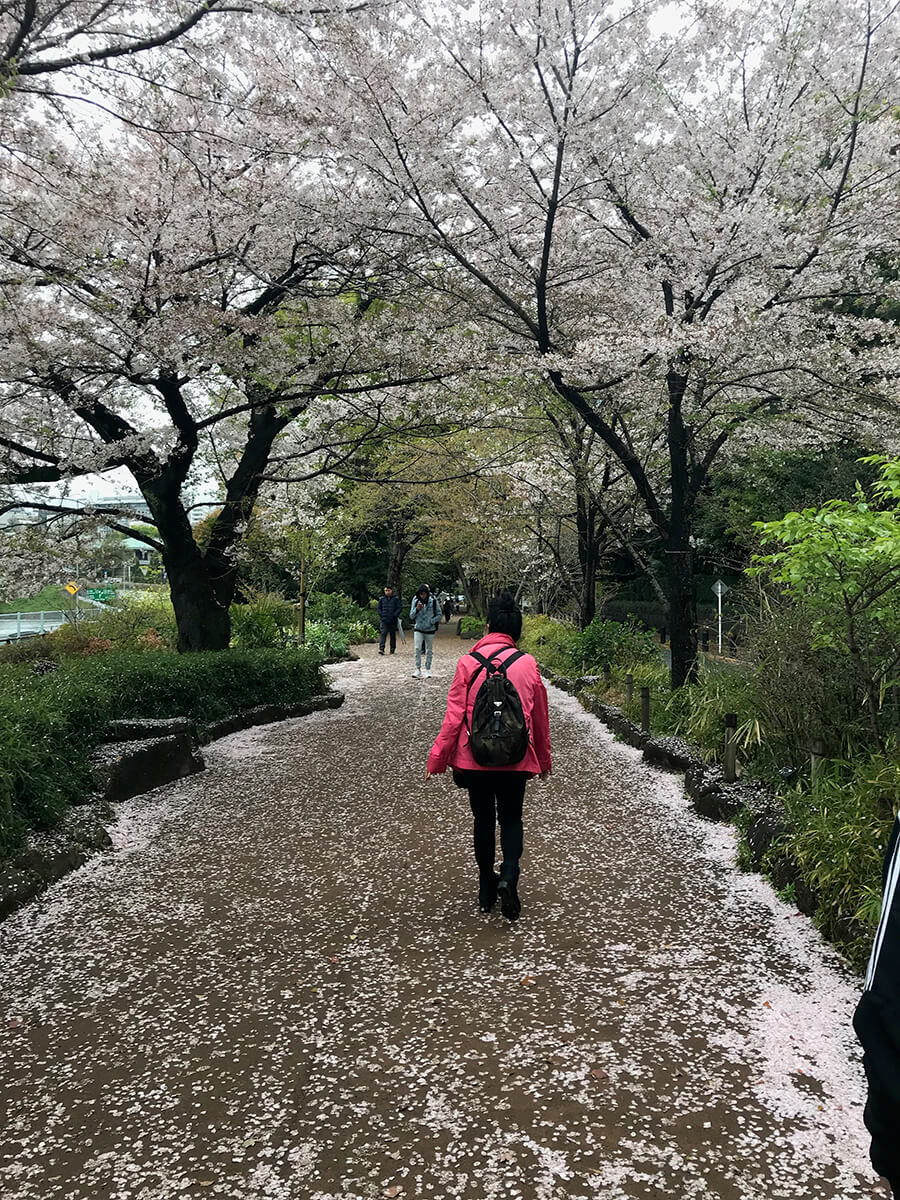
The author walking through a cherry blossom orchard in Tokyo.
Our next destination was Hakone, the resort town near Mount Fuji an hour to the west. Per the instructions, we were to walk to the subway near our hotel, go a few stops, change to a Japan Rail (JR) train, go a few stops to Tokyo Station, get on the 9:33 a.m. Shinkansen “bullet” train, and then take a taxi. Steve suggested taking a taxi from our hotel to Tokyo Station, but I felt confident we could figure out the transfers. We gave ourselves an hour.
He calmed me down, held my hand, and made me laugh about how ridiculous we must have looked.
We walked a few blocks in the wrong direction in search of the subway entrance and lost a few minutes.
Once inside, we couldn’t find the right JR platform and had to ask for directions multiple times. Miraculously, we got to Tokyo Station, but we had to sprint with our luggage through one of the busiest, most crowded train stations in the world. When we finally reached the entrance to the Shinkansen, we had to feed our tickets the right way through the turnstile, which, in my panic, I could not do. Picture a crazed American middle-aged woman, yelling “How does this effing thing work?” while a growing line of mild-mannered Japanese gawked.
A nice guard showed us how to feed in the tickets, and we made the train with seconds to spare.
“We made it,” Steve said. “It’s over.” It wasn’t over for me! I’d been humbled roundly, brought pathetically low by Tokyo transit. Logistics can make anyone lose their cool, but I shouldn’t have been that undone, literally shaking from the flood of cortisol and embarrassment.
Steve could have said, “I told you so” about taking that taxi. But, instead, he calmed me down, held my hand, made me laugh about how ridiculous we must have looked, cramming the tickets the wrong way into the machine over and over. In his quiet way, Steve carried the burden of my happiness just as mightily as I carried his. As we sped west, I learned it’s possible to feel shame and gratitude at the same time.
Catch Yourself Being Happy
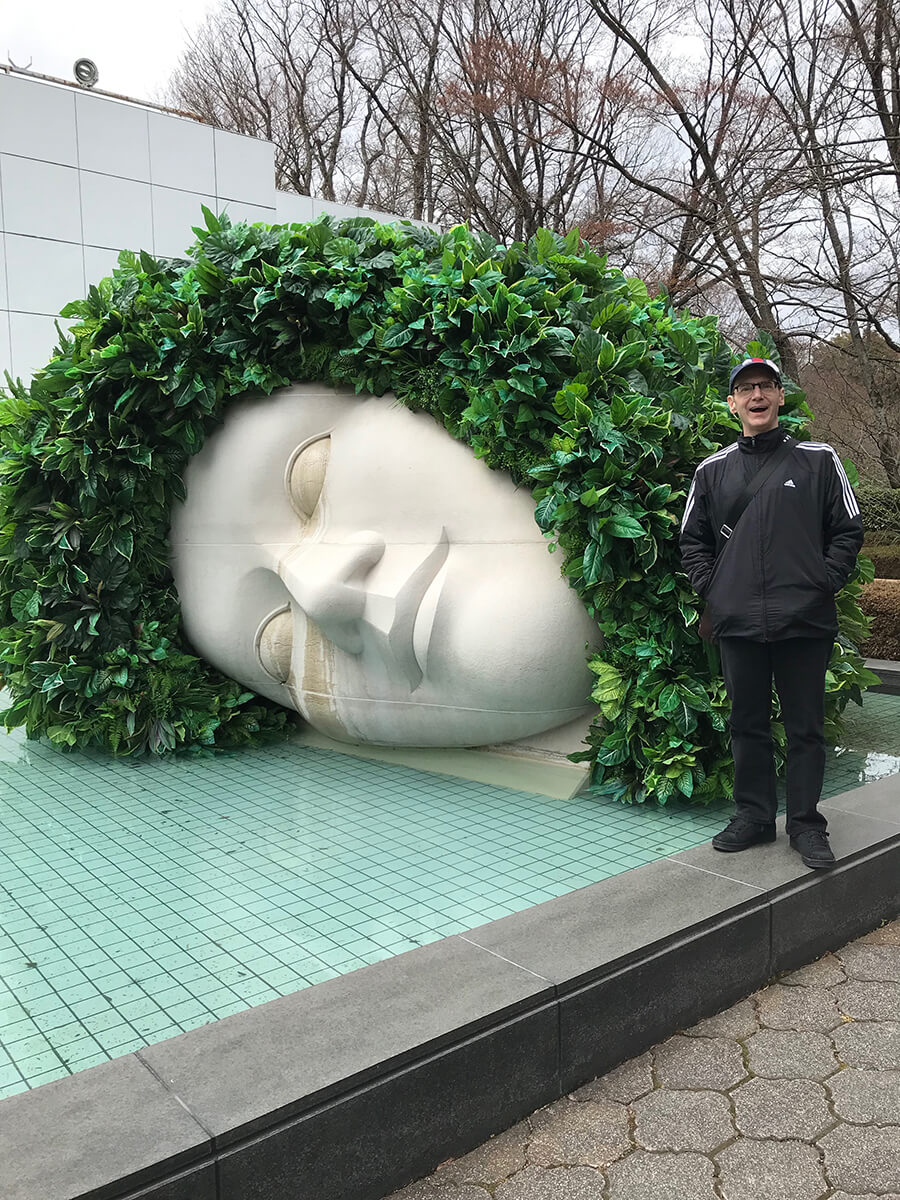
The author’s husband Steve at the The Hakone Open-Air Museum.
Hakone is famous for its volcanic hot springs and ryokans, traditional Japanese inns with mat floors, futons, and eight-course kaiseki meals exquisitely presented in tiny dishes and bowls, served on bended knee by young women in kimonos. For our two nights at the Yamanochaya ryokan, Steve and I relaxed in our private onsen (hot springs spa), got side-by-side shiatsu massages, and ate to bursting.
The sculptures were set against the backdrop of cherry pink rolling hills; it was almost too beautiful to bear.
Sightseeing in Hakone, we visited the jaw-dropping Open-Air Museum with enormous modern sculptures (one by Niki de Saint Phalle, a favorite of mine) set against the backdrop of cherry pink rolling hills. It was almost too beautiful to bear. We wound our way back to our ryokan in an old-fashioned train to a hidden station deep in a misty forest that could have come straight out of a Miyazaki fantasy.
Our tour was self-guided, no timetable or guide to worry about. After our bumpy, hectic start in Tokyo, Steve and I felt restored, jet lag and tensions behind us. It was easy to feel close and romantic in such an idyllic setting. Was our harmony possible because of the pampering, spa, and three-hour luxurious meals? Did it matter? We were getting along beautifully, and there was no point in questioning it. When in Hakone, be in Hakone. When in love, be in love.
Do One Thing at a Time
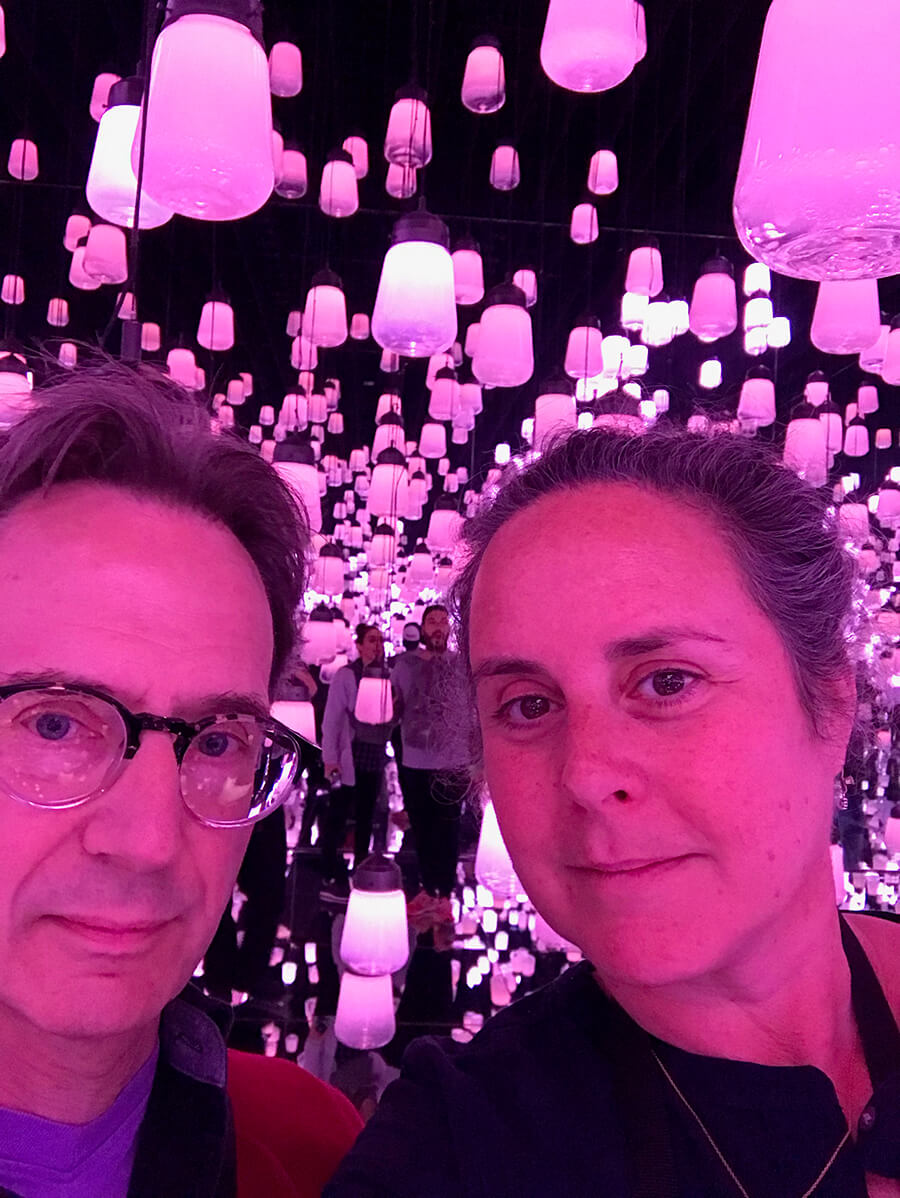
The author and her husband in a lantern room.
Next, we traveled to the ancient city of Kyoto, where we explored the Gion district, famous for its red-lanterned tea houses and maze-like streets. The novel Memoirs of a Geisha is set here; parts of the district look more or less the same as it did 300 years ago, rickshaws and all. We went to a small tea house for a lesson on how to make matcha, aka green tea. The kimono’d teacher used a thin wooden scoop, a bamboo ladle, and a bamboo brush to make tea, following the same series of precise steps women have done for hundreds of years, then whisking the green powder, turning the cup clockwise, bowing at intervals. It seemed like a lot just to make a cup of tea, but our instructor explained that the beverage itself was beside the point. The process was a meditation as much as a performance. “By doing only one thing at a time,” said our tea tutor, “you slow down. You’re present in the moment.”
‘By doing only one thing at a time,’ said our tea tutor, ‘you slow down. You’re present in the moment.’
After tea, Steve declared that he was starving and wanted a burger. I took out my phone, located an English-style pub, and we started walking.
Although I agreed to the plan initially to make him happy, I was against it. “We didn’t come to Japan to eat burgers,” I grumbled, hangrily.
“You’re doing it,” he said. “Taking your bad mood out on me.”
We’d paused to have this conversation, and we realized we were standing at the entrance to a park that was having a sakura, or cherry blossom, festival. People coming and going from the festival were smiling and laughing.
I said, “Let’s see what’s going on in the park,” and turned off my phone. We entered the festival, and from the dozens of food stalls selling crab fritters, dumplings, and fried chicken on sticks, bought everything and ate off paper plates under a copse of cherry trees, pink petals drifting down on us and landing in our pints of Sapporo. After filling up, our moods were sufficiently softened, and we talked about our brief tension on the street.
“If you didn’t want to eat at a pub, you should have said so right away,” he said.
Yes, of course. Obviously. Suppressing my feelings for the sake of civility had been the cause of this and so many other fights. But it wasn’t only about that. If I were truly tuned into myself and my husband, we’d move at the same pace and feel free to express ourselves without fear of judgment or defensiveness. Like the tea ceremony, our negative behavior patterns were repeated over the years, with predictably bad results. Unlike how the tea ceremony operated, when we found ourselves mad at each other over impatience or suppressed anger, we hadn’t been present in the moment and with each other. In this case, I was busy reading the map, fretting about my phone dying. Steve was registering my darkening mood, bracing for tension. Too many things at once.
If Steve hadn’t called me out on my mood, we might have walked right by the sakura festival and missed this spontaneous experience. For the rest of the night, we vowed to do only one thing at a time—eat dumplings (the ones in the park were the best I ever had), look at the flowers, walk back to the hotel, and make use of the king-size bed—and reclaimed our harmony.
The Joy of Not Knowing
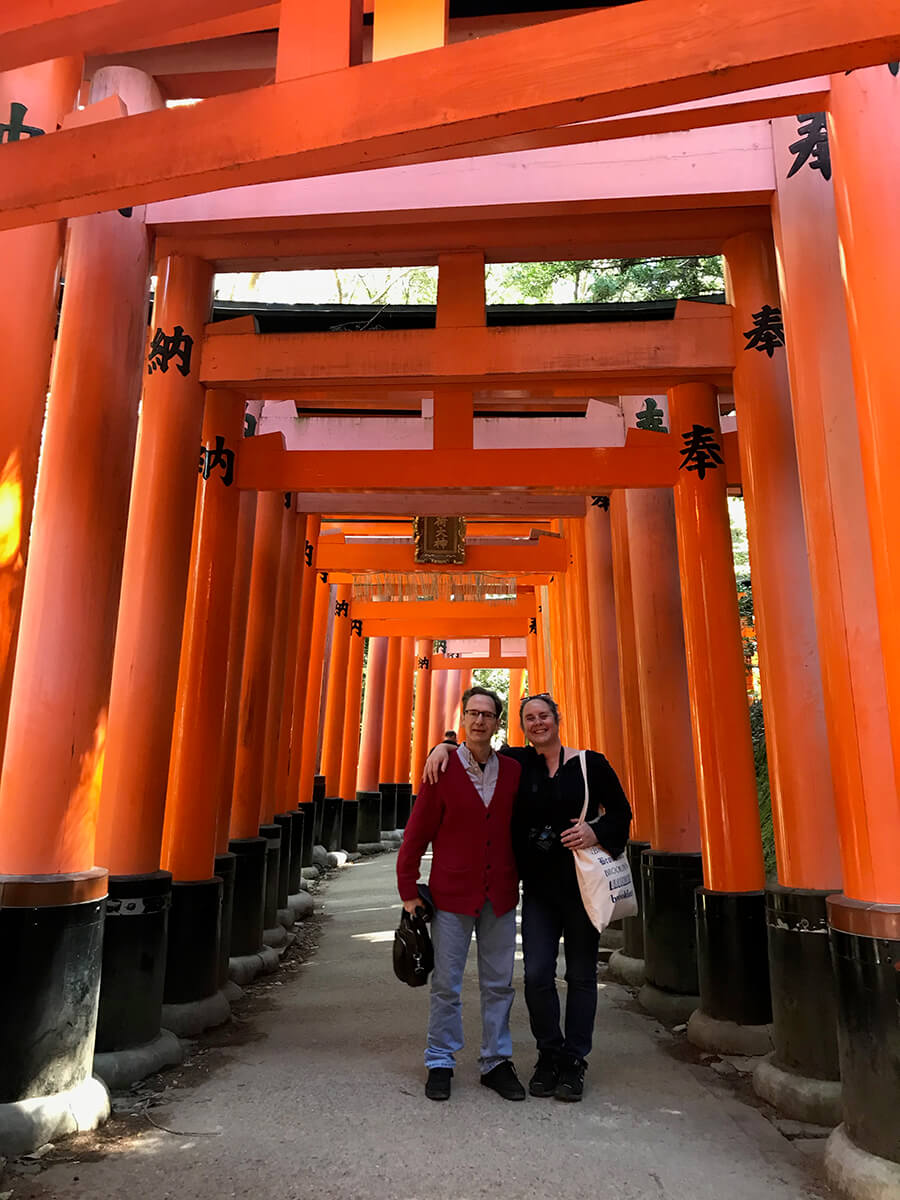
The author and her husband at the Shinto Fushimi Inari Taisha shrine.
The next day, we took a guided tour of the Shinto Fushimi Inari Taisha, a shrine famous for its 10,000 vermillion gates, and the Sagano bamboo grove in the Arashiyama district on the outskirts of Kyoto. We toured a glorious Zen garden, once the private retreat of a silent movie star named Denjirō Ōkōchi, up a winding path up Mt. Ogura. The slope was gradual; the path seemed needlessly winding. Ana, our Buddhist guide, said, “In a Zen garden, the path is winding and obscured to build excitement about what comes next.”
I said, “That’s one way of looking at it. Some people might be afraid of what they can’t see coming.”
Too much planning and rushing blocked out the possibility of unexpected pleasures.
Our guide laughed at my American fear of the unknown.
As we walked, the path opened to reveal distinct areas: The actor’s mountain house with a row of cherry trees, their blossoms creating the illusion of pink clouds in the sky; a rock garden with artfully arranged piles that looked like a waterfall spilling into a white pebble ocean with islands of green plants; a full-sun moss garden, its green carpet bordered by just-opening red and pink azaleas. Ana was right; the surprise made each newly revealed marvel even more delightful.
With all my planning and rushing—on vacations, but pretty much all the time—I try to anticipate every need and potential problem. But too much planning and rushing blocked out the possibility of unexpected pleasures. What vacation, what marriage, wouldn’t benefit from more of those? My pace slowed considerably on that tour, even slower than Steve’s, and I felt myself unclench with relief and joy.
Read More: Going the Distance: A 200-Mile Bike Tour Called Marriage
You Already Have What You Need
After a day trip to Nara to see the thousands of sacred deer that roam all over the town and let humans pet and feed them, we returned to Tokyo for two final nights. We stayed in the uber-modern Park Hotel in the 31th-floor “dragon room,” transformed by Japanese artist Kiyoko Abe’s colorful, kinetic painting of a mythical creature that stretched from the hallway, through the bathroom, and into the bedroom. The view outside our room was just as dramatic: the Eiffel-esque Tokyo Tower and a completely exposed base-to-tip Mt. Fuji looming over Tokyo.
It was up to me to notice how Steve loved me and to give him as much as I craved from him.
On our last night, we walked around the red-light area and checked out the tiny bars, robot cafés, and the Godzilla statue. What really fascinated me were the cheesy Vegas-style hook-up venues called Love Hotels, where couples can “rest” for an hour or “stay” for a whole night, and the glittery, crystal chandeliered Host Clubs, where women spend hundreds of dollars per night to talk to and buy drinks for the hosts, young men styled via plastic surgery and contacts to look like anime characters. (There are Host Clubs that cater to men, too.)
“So at the Host Clubs, women pay just to talk to guy and buy him drinks?” I asked our guide.
“They talk, flirt, dance, sing karaoke,” he said. “It’s not about sex. It’s about companionship and escape.”
Workaholic women (and men) in Japan put in crazy long hours, and many live at home with their parents well into adulthood. No time or privacy make places like Love Hotels and Host Clubs social necessities. People get lonely. They need to connect. They crave attention.
I craved attention, approval, acceptance, and appreciation—so many A words. That night, I acknowledged with a full heart that Steve gives me all of those things. Maybe he didn’t always acknowledge and appreciate me in obvious ways. But it was up to me to notice how he loved me, to notice his care, to give him as much approval and acceptance as I craved from him. We were each other’s hosts. The service provided free of charge, gratefully.
As we left Tokyo on a cloudy day, Steve said, “I love Japan!” He’d never said that before when leaving a particular country.
We returned to our apartment that might not meet the standards of a pristine ryokan; we lived neat if cluttered lives. But I felt that our marriage had been streamlined on this trip, Kondo-ed. We just didn’t need impatience and frustration. We could get rid of those so that the love and appreciation were easier to see.
We’ve been back a month, and the Tokyo glow is still lighting us up. We have had a few tense moments since we’ve been home, but they seem softer. All we have to do is look at the pictures of the onsen in Hakone, the tea house in Kyoto, or the moss garden in Arashiyama to happily return to our places of Zen.
So, yeah. Japan was “worth it.” Every single yen.
A version of this article was originally published on NextTribe in June 2019.
***
Valerie Frankel is a ghostwriter who has collaborated with iconic celebrities and VIPs on bestselling novels and non-fiction projects, including Joan Rivers (New York Times bestseller Men Are Stupid And They Like Big Boobs), Nicole “Snooki” Polizzi (New York Times bestseller A Shore Thing), Ivana Trump (Raising Trump), Jeanine Pirro (He Killed Them All: Robert Durst and My Quest for Justice) and others. Under her own name, Val has published 15 novels and is an award-winning journalist. She was articles editor at Mademoiselle magazine and as a freelance writer, she has been a regular contributor to Self, Parenting, Good Housekeeping, Glamour, and the New York Times.











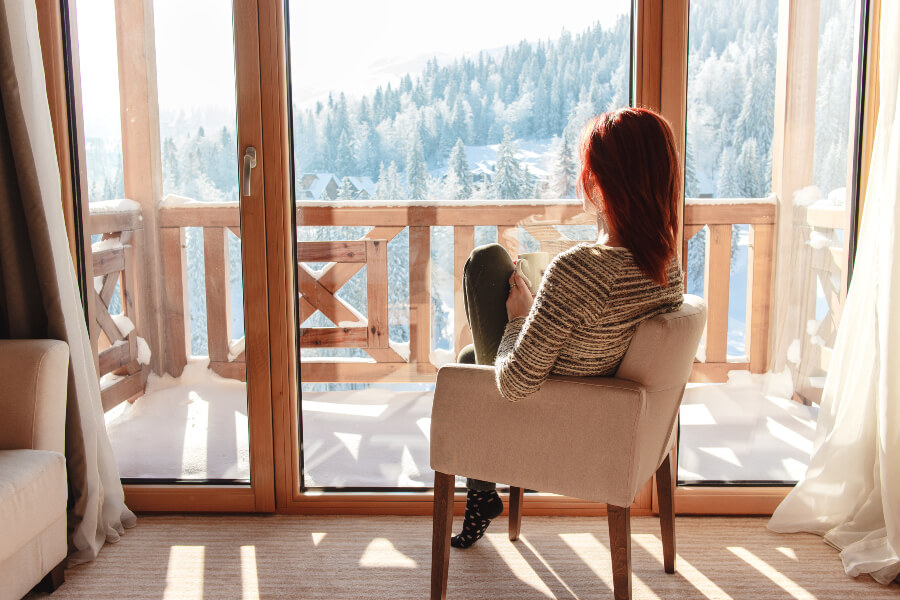
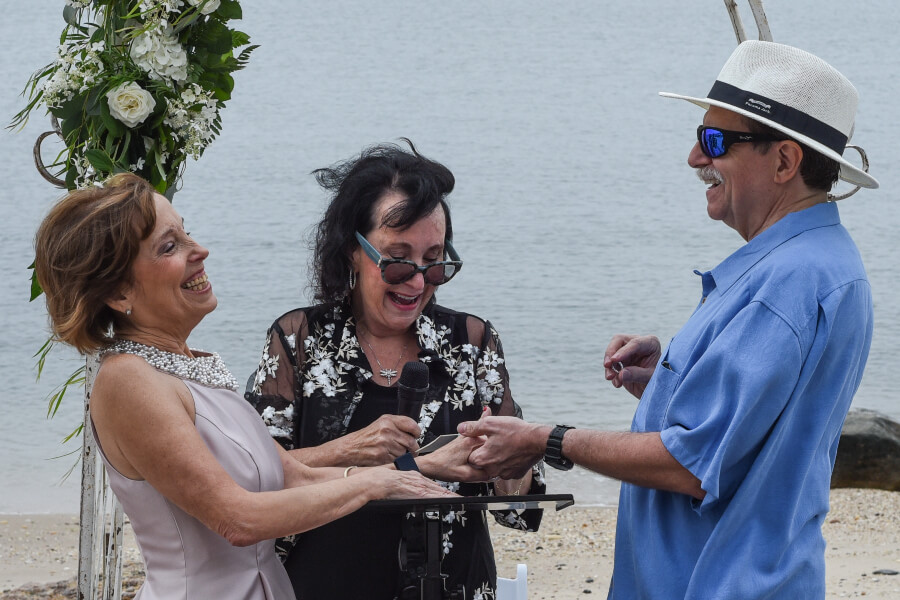





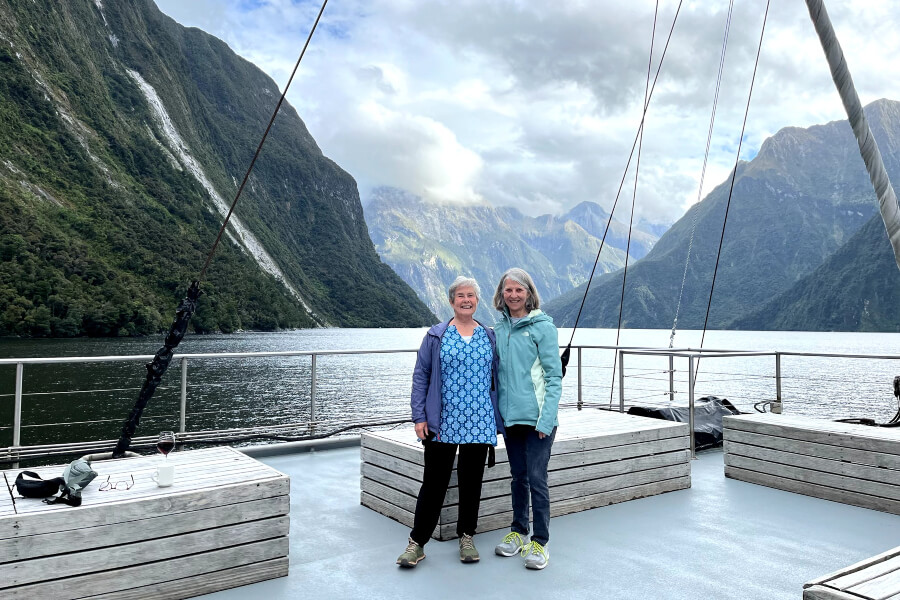


0 Comments